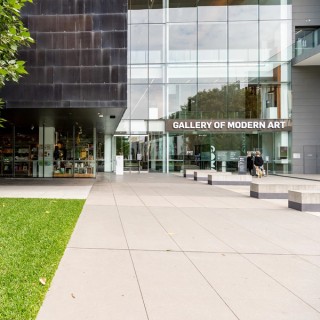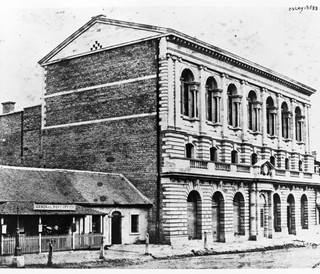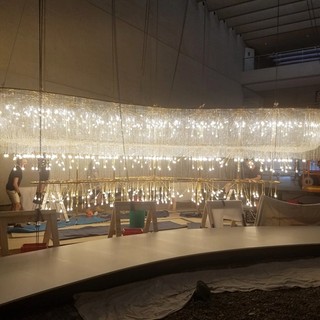
Entrance to the Queensland Art Gallery, Melbourne Street / View full image
Queensland Art Gallery
Architect: Robin Gibson AO (1930–2014)
Opened: 21 June 1982
Awards: Sir Zelman Cowan Award for Architecture
The Queensland Art Gallery building opened in 1982 as part of the first stage of the Queensland Cultural Centre at South Bank. In December 2006, a new sweeping glass entry designed by original architect Robin Gibson was added at Stanley Place.
'It is not only a place for the collection and exhibition of our art works, it is a place where the walls and barriers of the Gallery are broken down, where there is a constant source of interchange between the art world and the public.' – Robin Gibson, architect's statement







